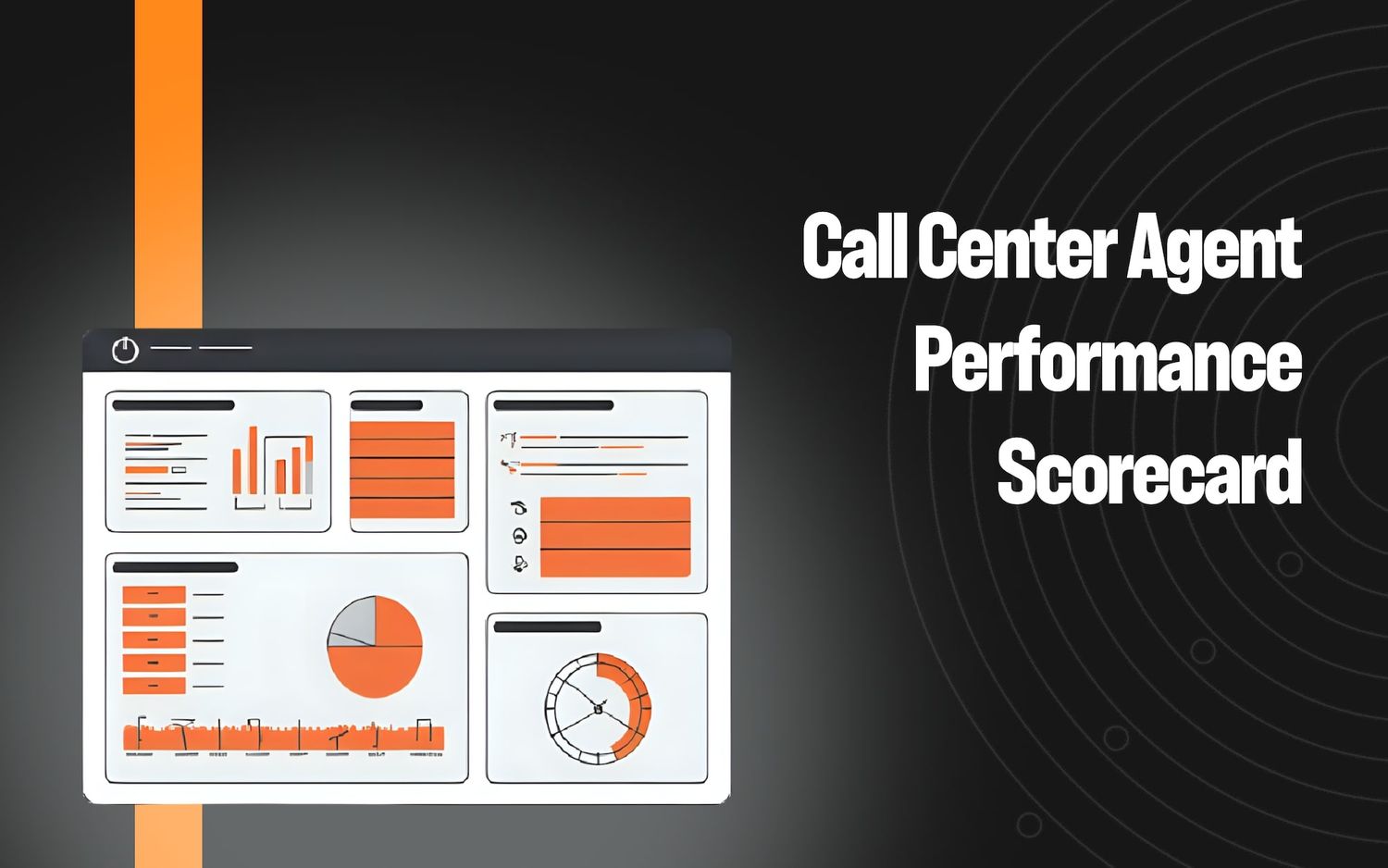AI Speech Analytics for Contact Centers: In-Depth Guide

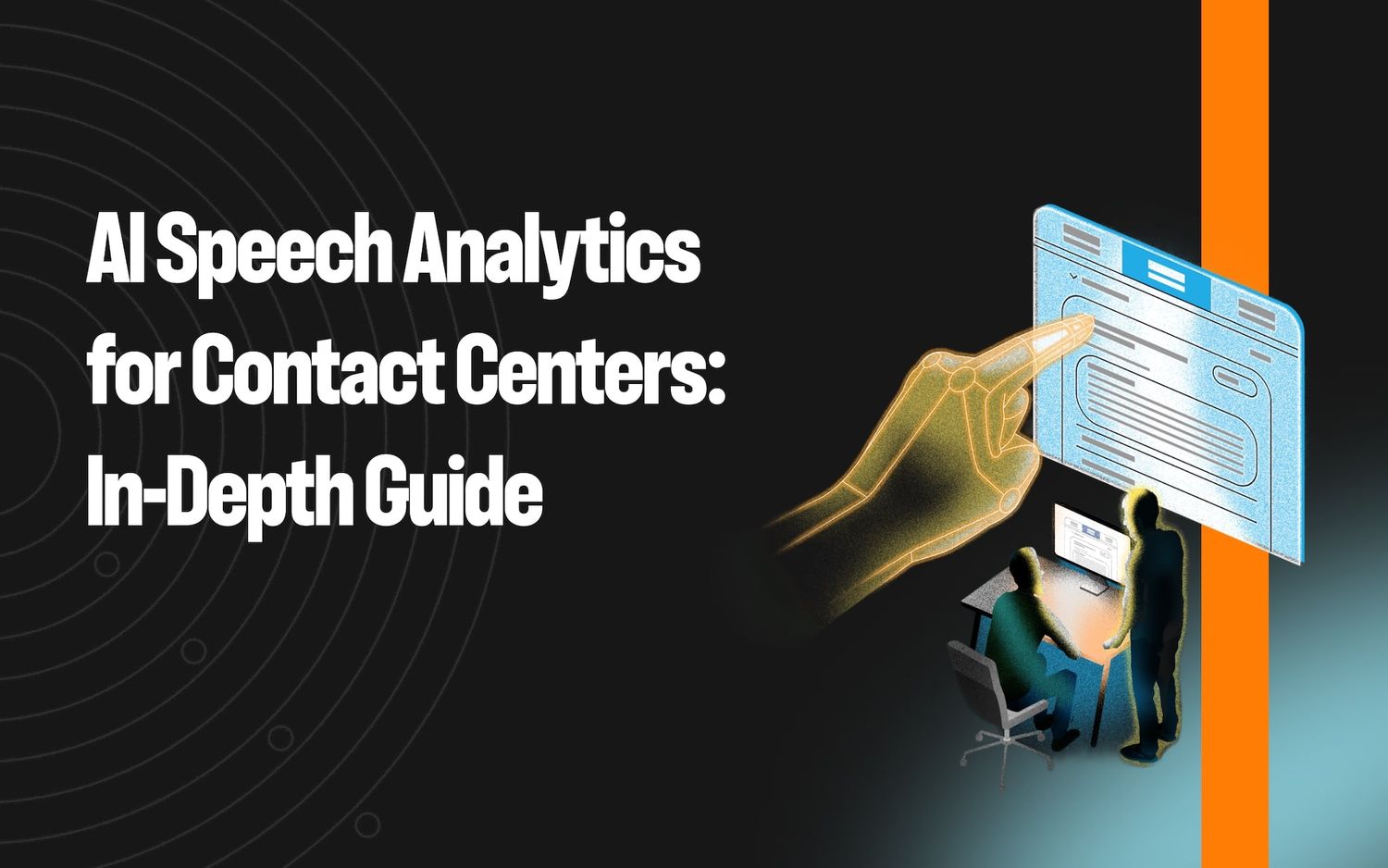
Call center leaders and QA teams use AI speech analytics software to:
- Evaluate 100% of agent calls (compared to 1%–2% without it).
- Quickly identify the best calls for coaching.
- Analyze customer satisfaction trends to highlight successful agent practices and areas for improvement.
- Examine the content of conversations to uncover deeper insights and enhance the accuracy of call tracking and reporting.
- Automatically score an agent’s customer interaction performance in real time.
In this guide, we cover how AI-powered speech analytics outperforms other speech analytics software in accuracy, efficiency, and actionable insights.
We also show you how to choose a solution, and provide a list of the top AI-powered speech analytics software on the market, starting with our own platform, Level AI.
What is AI Speech Analytics?
AI speech analytics uses speech recognition, natural language processing (NLP), and semantic intelligence to understand and analyze voice interactions. It turns unstructured call recordings into meaningful data that call centers can use to better understand agent performance in customer interactions.
In many contact centers, customer service calls are evaluated manually. A manual evaluator randomly selects recorded calls to grade an agent’s performance, gauge customer satisfaction, and determine where the company can improve internal service offerings.
This hands-on approach results in only about 1%–2% of calls being reviewed, while leaving a number of customer interaction trends or patterns (such as repeated customer complaints about the same issue) potentially undetected.
To solve those pitfalls, speech analytics software was created to transcribe calls and identify keywords such as “cancel account” or “refund.” While this helps capture specific issues, it often misses the broader context, intent, and emotional tone of the conversation, limiting its effectiveness in providing comprehensive insights.
Imagine a customer calling to say, “I’ve been a loyal customer for a long time, but my recent orders keep arriving late.” A keyword-based system might detect keywords like “loyal customer” and “recent orders,” possibly tagging this as a routine customer inquiry. However, such a system would miss the underlying sentiment — frustration — due to the focus on individual keywords rather than the overall context.
In contrast, an AI system that uses natural language understanding (NLU) would grasp the dissatisfaction in the customer's tone and context. It would recognize the key issue is the repeated delays in shipping, which causes frustration.
Beyond simply tagging the conversation as related to “shipping,” the AI could recognize this as “shipping delays leading to customer frustration,” thereby allowing the company to identify a recurring problem that might go unnoticed.
Another shortcoming of the keyword-based system is the need to manually enter every keyword or phrase you’d like the system to detect. Some scenarios require tens or even hundreds of keywords and their combinations to capture, and even then you may not cover all possible cases.
AI actually understands what’s being said and labels key conversational moments without you having to give it any preset criteria. This not only saves you time, but also ensures that more sentiments and intents will be picked up.
How to Choose a Speech Analytics Tool That’s Actually AI
There are many different AI speech analytics tools available, but they aren’t all made the same. One of the biggest issues we see is tools claiming to be “AI powered” when in fact they’re just using sophisticated algorithms or keyword matching instead of true AI to analyze call recordings, measure customer sentiment, and detect a conversation’s meaning.
True AI, especially when powered by generative models and natural language understanding, goes beyond just recognizing words or phrases. It comprehends the meaning behind the text through semantic and syntactic analysis. This allows the system to understand the intent and purpose of a conversation, even when expressed in varied or nuanced ways.
For contact centers, this is an important difference. A system with genuine AI capabilities can understand conversations with higher accuracy, grasping not just what was said, but why it was said. This level of comprehension allows for more precise sentiment analysis, more effective automated quality management, and overall insights that are beyond the reach of systems pretending to be AI.
Top Options for AI Speech Analytics
Below, we list and describe the top four AI speech analytics software for customer service and sales teams.
1. Level AI
AI-Powered Speech Analytics Software for Contact Centers
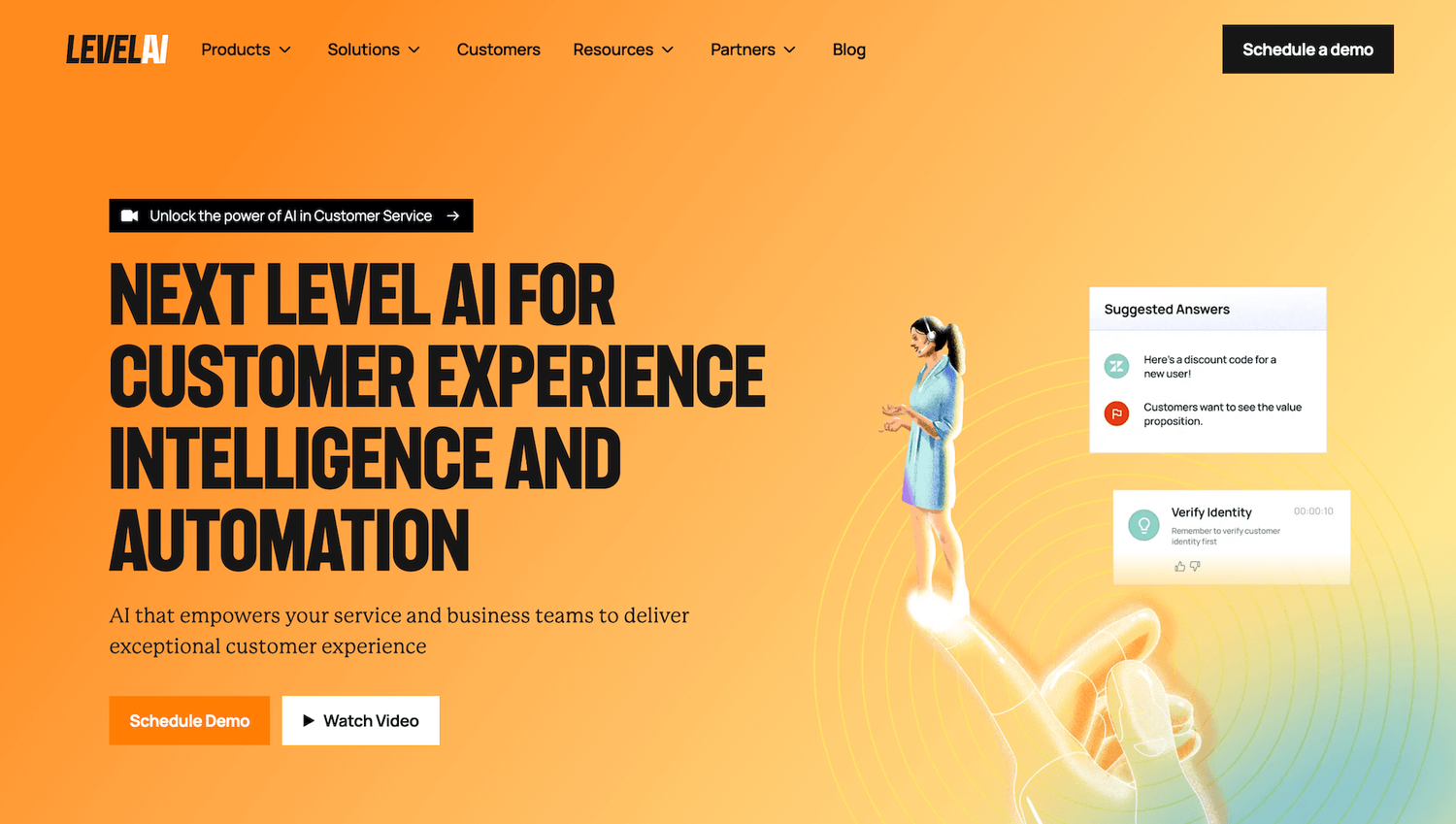
Unlike solutions that simply detect keywords or rely on rule-based processes, Level AI leverages true artificial intelligence to build deep conversational understanding, offering insights that surpass traditional speech analytics tools.
Our software allows you to:
- Review 100% of conversations on phone, email, chat, and other channels
- Boost the performance of your agents by providing the right information when they need it, based on topics currently under discussion
- Automatically categorize the purpose of calls based on topics discussed (dispositioning)
- Autoscore agents according to their performance based on QA scorecards
- Better understand, and visualize trends in customer needs that may be very subtly expressed or implied in interactions (i.e., better customer analytics)
Below, we highlight important details and provide examples for how all this works.
Detect Meanings and Intents with Semantic Intelligence
Our AI functionality is based on the software’s near-human understanding of intent expressed by both customers and agents during interactions.
In the context of support or sales interactions, intent refers to the underlying purpose or goal behind a customer's words, whether they’re seeking help, expressing frustration, or exploring a purchase.
Level AI recognizes an intent expressed in conversation and labels this as a scenario — which can be a desire to close an account, return an item, or request troubleshooting help, for instance.
Our Scenario Engine recognizes certain phrases as indicating a given scenario and applies conversations tags to these. For example, phrases like "Can't log in" or "Forgot my password" might be tagged as an "Account Access Issue" scenario.
Any saved interaction in the system will contain multiple conversation tags, giving you immediate visibility on what customers are aiming to achieve in a call, without you having to read the entire transcript.
You can search across multiple conversations for a given conversation tag to find all conversations where a given intent was expressed. For example, you can pull up all conversations where agents expressed frustration, a customer wanted to close their account, or where customers decided to upgrade their service:
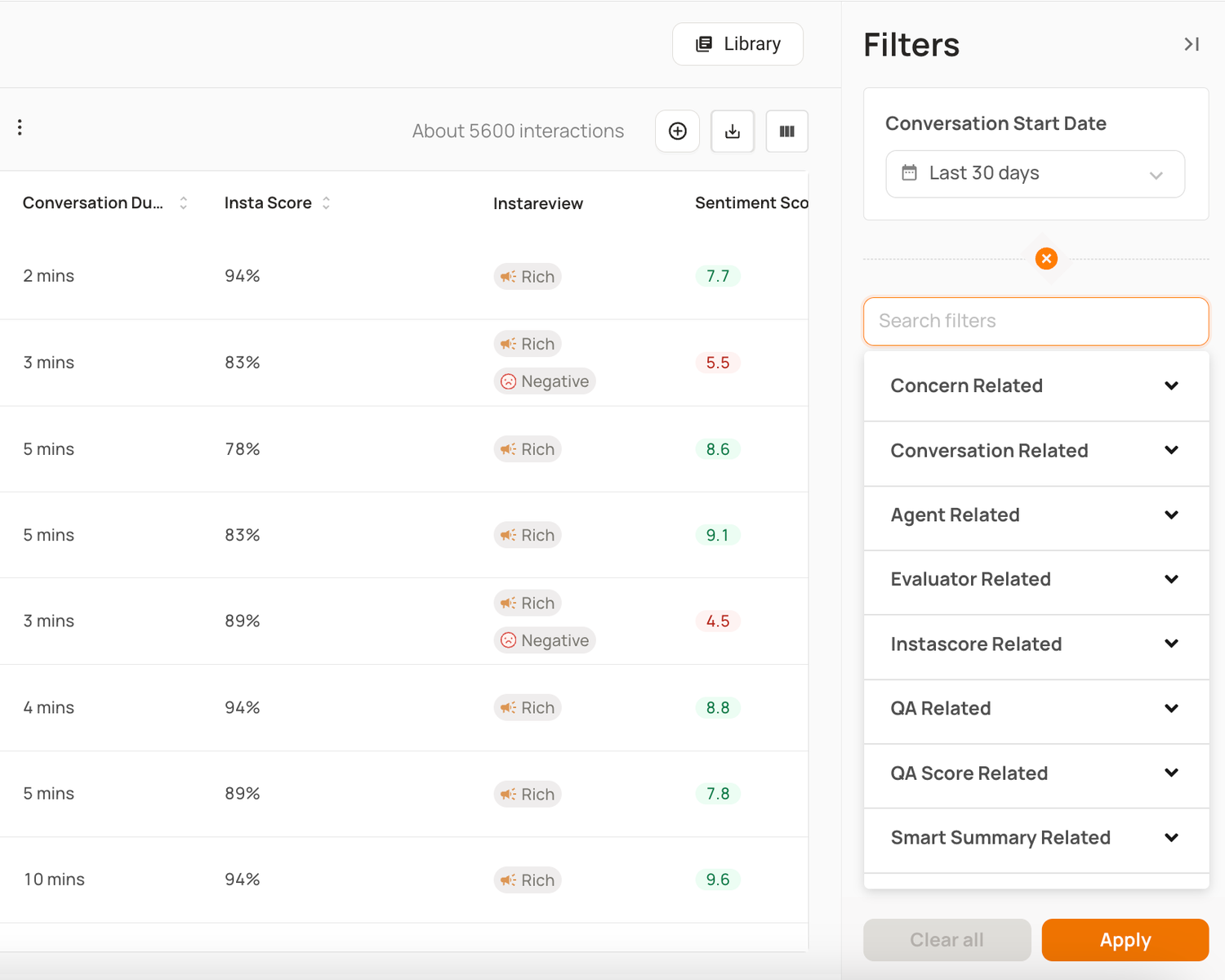
This is a more useful and accurate way of surfacing relevant conversations than by merely entering keywords and hoping for exact matches, which often miss the context, intent, and nuances that are essential for uncovering trends and insights across multiple conversations.
Level AI lets you define scenarios that are specific to your business and industry, ensuring the AI is finely tuned to capture the unique intents and nuances relevant to your operations.
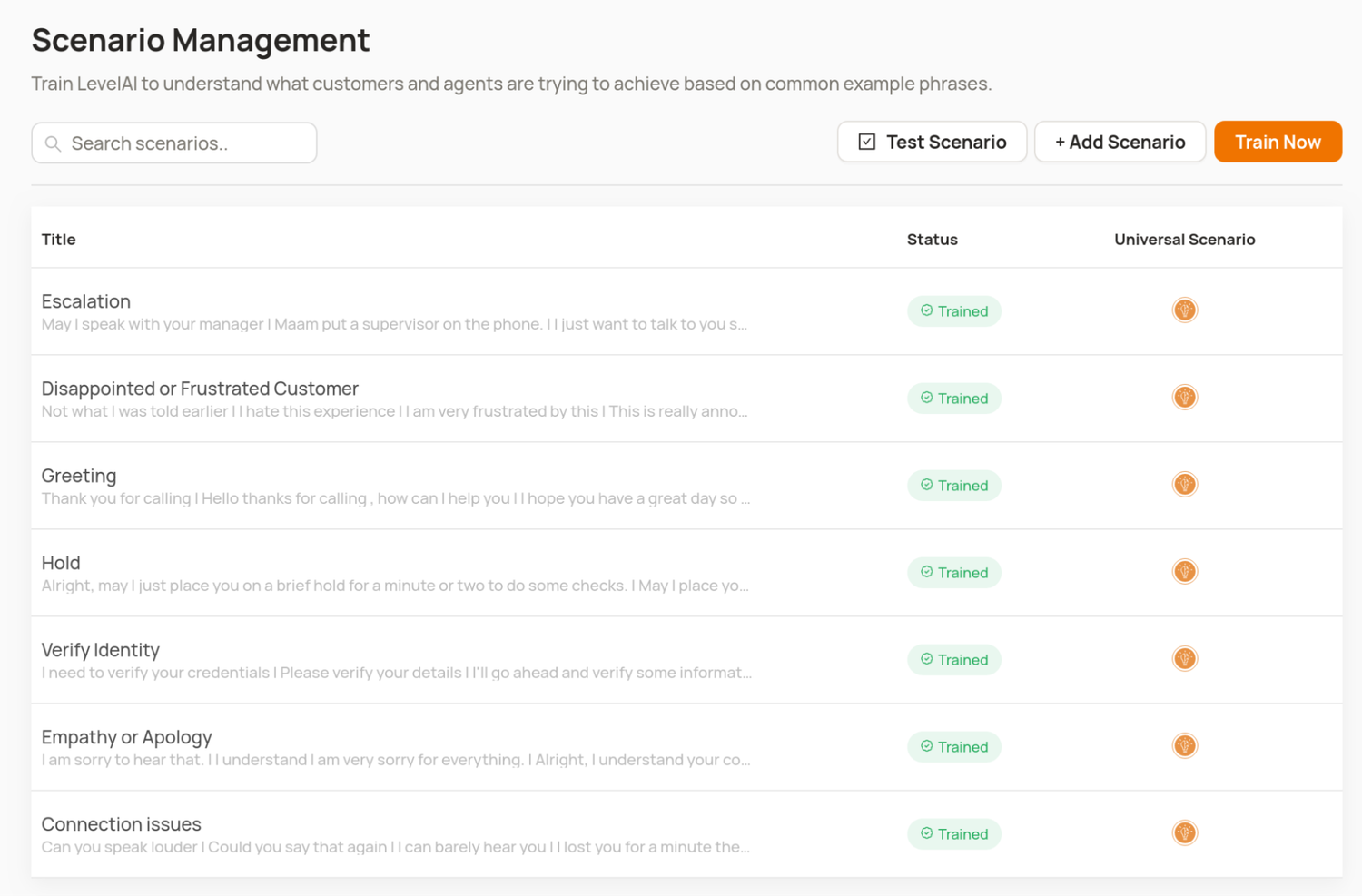
Assist Agents During Ongoing Conversations
Our Real-Time Agent Assist allows agents to increase their efficiency while maintaining service levels by analyzing ongoing conversations to understand the topics and intents being discussed.
As the conversation unfolds, the platform’s AI identifies intent and displays knowledge base articles and FAQs that are relevant to that intent in real time.
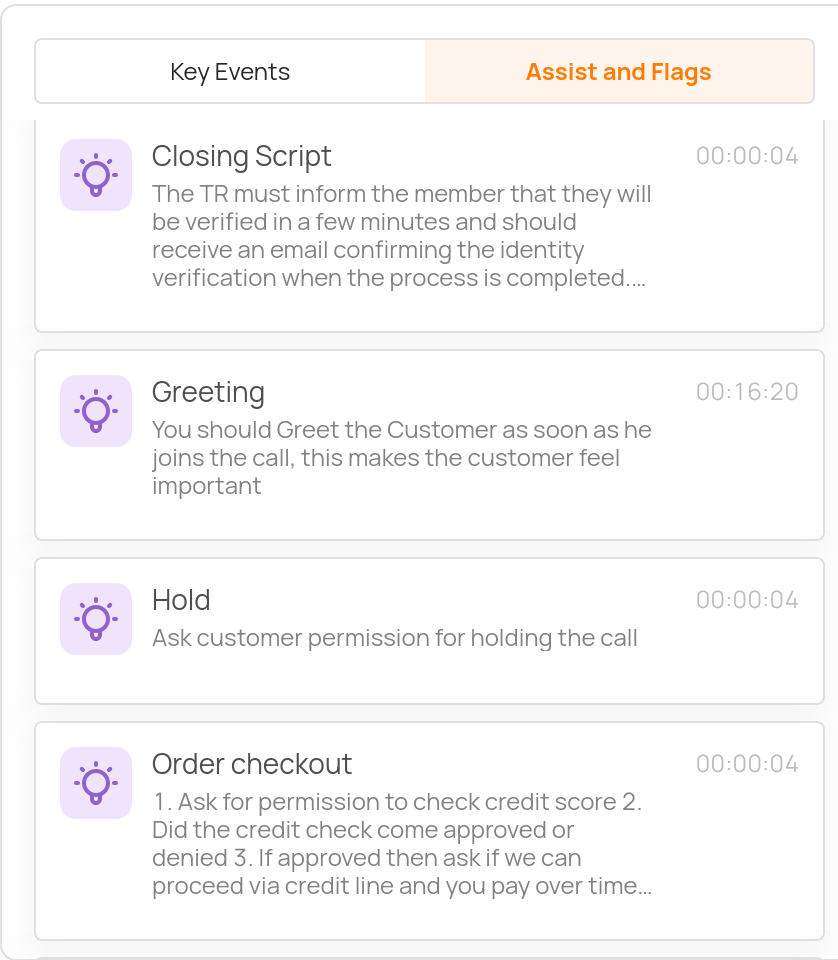
This gives agents instant access to information to reduce wait times, answer questions more accurately, and provide faster resolutions.
This in turn reduces average handle times while improving service levels. The search function of Real-Time Agent Assist, Chat with Your Knowledge Base, works in a similar way by detecting intent in real time to propose search queries relevant to what the agent might search, auto filling the search bar:

Chat with Your Knowledge Base connects with your existing knowledge base to pull the appropriate information in real time. Agents can train the AI by using the thumbs-up and thumbs-down buttons to indicate the relevance of the information. Over time, this provides more finely tuned responses to reps.
Administrators can also easily configure handover of support cases from your front-line chatbot to Real-Time Agent Assist.
Categorizing Conversations for Automatic Dispositioning
Level AI automatically classifies calls according to their category and subcategory as indicated in your disposition categories.
This saves agents time and allows them to be more productive in answering prospects’ or customers’ questions rather than having to manually search through a tiered tree of disposition codes.
Although we provide default call categories out-of-the box, you can create your own business-specific ones by providing the system with example phrases to help it recognize your categories.
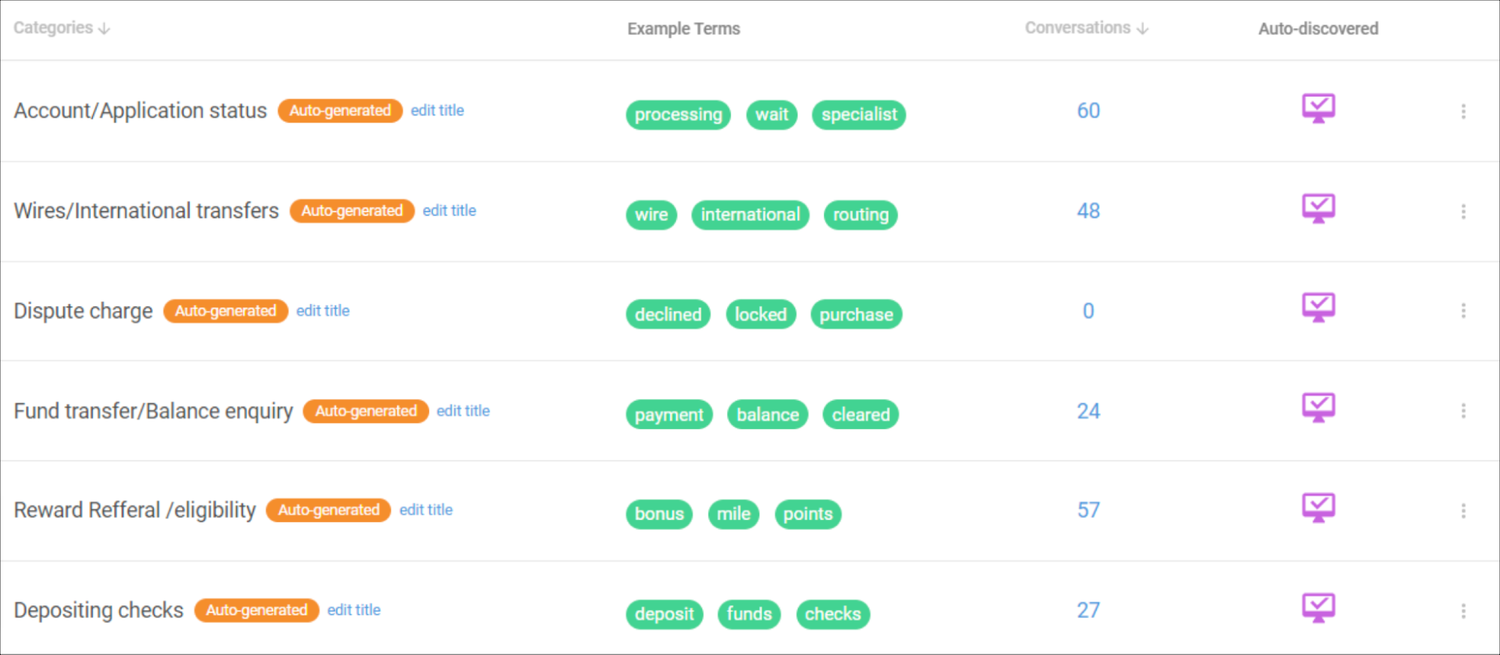
Besides entering your own categories, the system also provides a number of so-called “near-miss phrases” from past conversations that almost match your proposed categories, which you can accept or reject to further improve the system’s accuracy.
Autoscoring Agent Performance
Level AI evaluates each individual agent’s performance and generates a unique InstaScore for that agent, which reflects their overall quality based on your contact center’s specific rubrics.
This personalized score is expressed as a percentage and shows how well each agent is performing, making it easier to identify areas for improvement and celebrate successes.
InstaScore is a quantitative measure of agent success, but for more qualitative measures — like the finer details of conversation such as tone and empathy — human evaluators are needed.
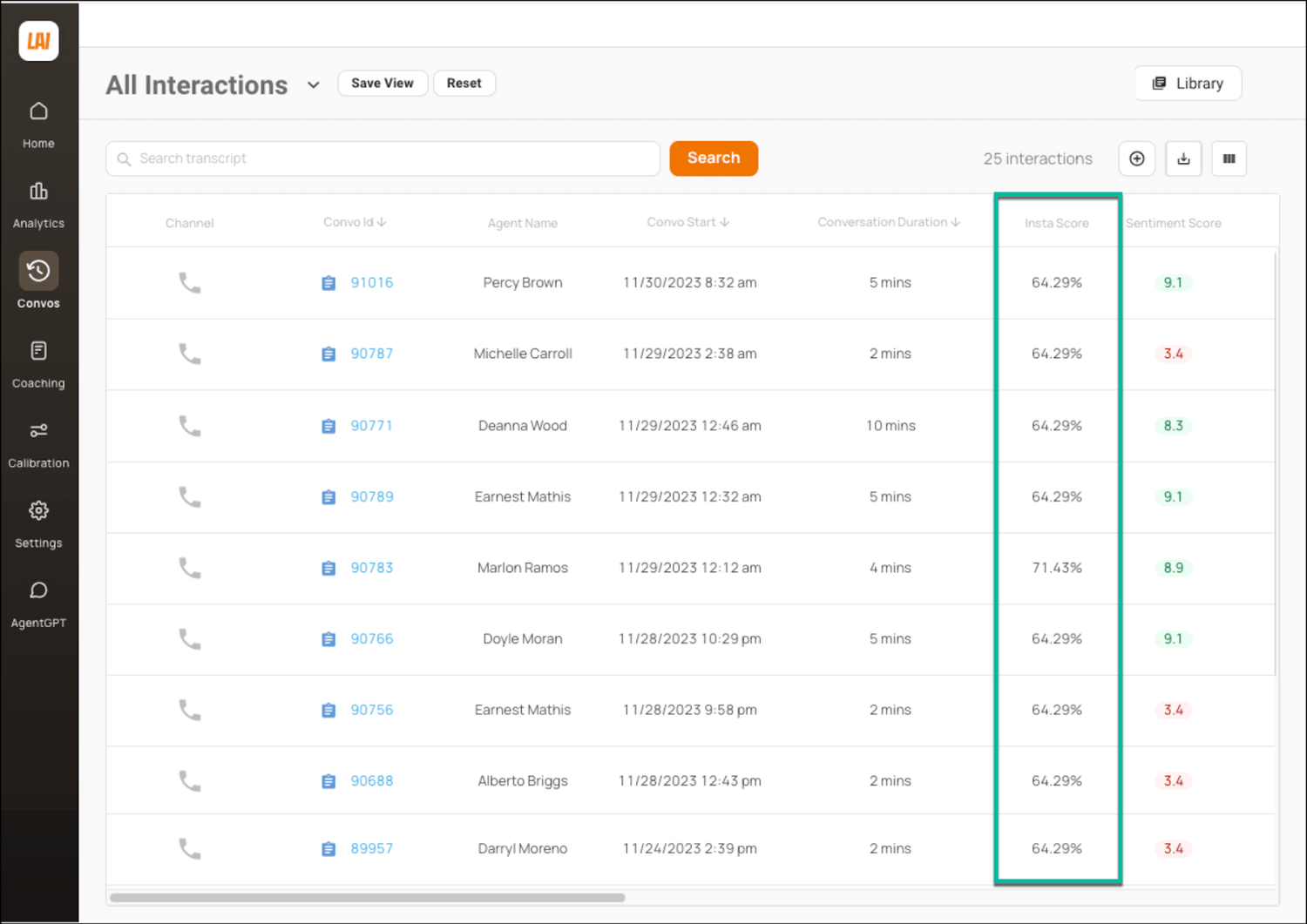
The beauty of InstaScore is it allows you to autoscore all agents to instantly see who’s doing great or who needs support, letting you focus your time and resources on the most impactful areas, rather than sifting through all interactions.
This targeted approach ensures you only sample where it’s worthwhile, maximizing your time and effectiveness.
Another aspect of autoscoring is Level AI’s Sentiment Score for measuring overall sentiment of a conversation.
Unlike other software that automatically detects whether sentiment is “positive” or “negative,” our platform is unique in measuring an entire range of emotions:
- Anger
- Disapproval
- Disappointment
- Worry
- Happiness
- Admiration
- Gratitude
We aggregate all such sentiments detected throughout a single interaction and weight these depending on when they occur in conversation, since emotions expressed at the end (after a resolution is either achieved or not achieved) are more reflective of customer sentiment towards your brand.

The score is on a scale from 0 to 10 (with 0 being strongly negative and 10 being strongly positive). Higher scores reflect a better customer interaction experience.
Besides scoring, Level AI highlights occurrences in speech of the sentiments listed above using sentiment tags, which function similarly to conversation tags. So when a customer expresses frustration or anger, for instance, the system highlights their words in speech with the corresponding tags.
Just as with conversation tags, Level AI allows you to use sentiments as a reporting dimension, allowing you to ask questions such as:
- What are the most common sentiments expressed during interactions where customer satisfaction scores (CSAT) are low?
- Which product features or services are most frequently associated with negative sentiments like frustration or disappointment?
- Which agents consistently handle conversations where negative sentiments are expressed, and how do they perform in terms of resolution?
- Which coaching interventions have led to improvements in handling conversations with negative sentiment?
Level AI lets you leverage such secure and customizable Generative AI capabilities to ask nuanced, data-driven questions and gain meaningful insights into customer interactions and agent performance.
Generate Advanced Reports and Voice of the Customer (VoC) Insights
Unlocking hidden insights from your customer data is one of the biggest advantages of using Level AI, which allows you to go beyond surface-level metrics and dive deep into sentiments, trends, and patterns that shape customer experiences.
By leveraging these insights, you can create advanced reports that not only track performance but also reveal the underlying drivers behind customer satisfaction, loyalty, and churn.
Level AI integrates with a wide range of different types of data, allowing the use of not only data that’s internal to the platform but also from your existing CRM, knowledge base, ticketing system, and survey tools. You can generate insightful reports from nearly everything that gets collected within your organization.
Level AI’s Query Builder makes it especially easy to select from a variety of data sources, and to create individual charts based on specific measures, date ranges, and custom filters:
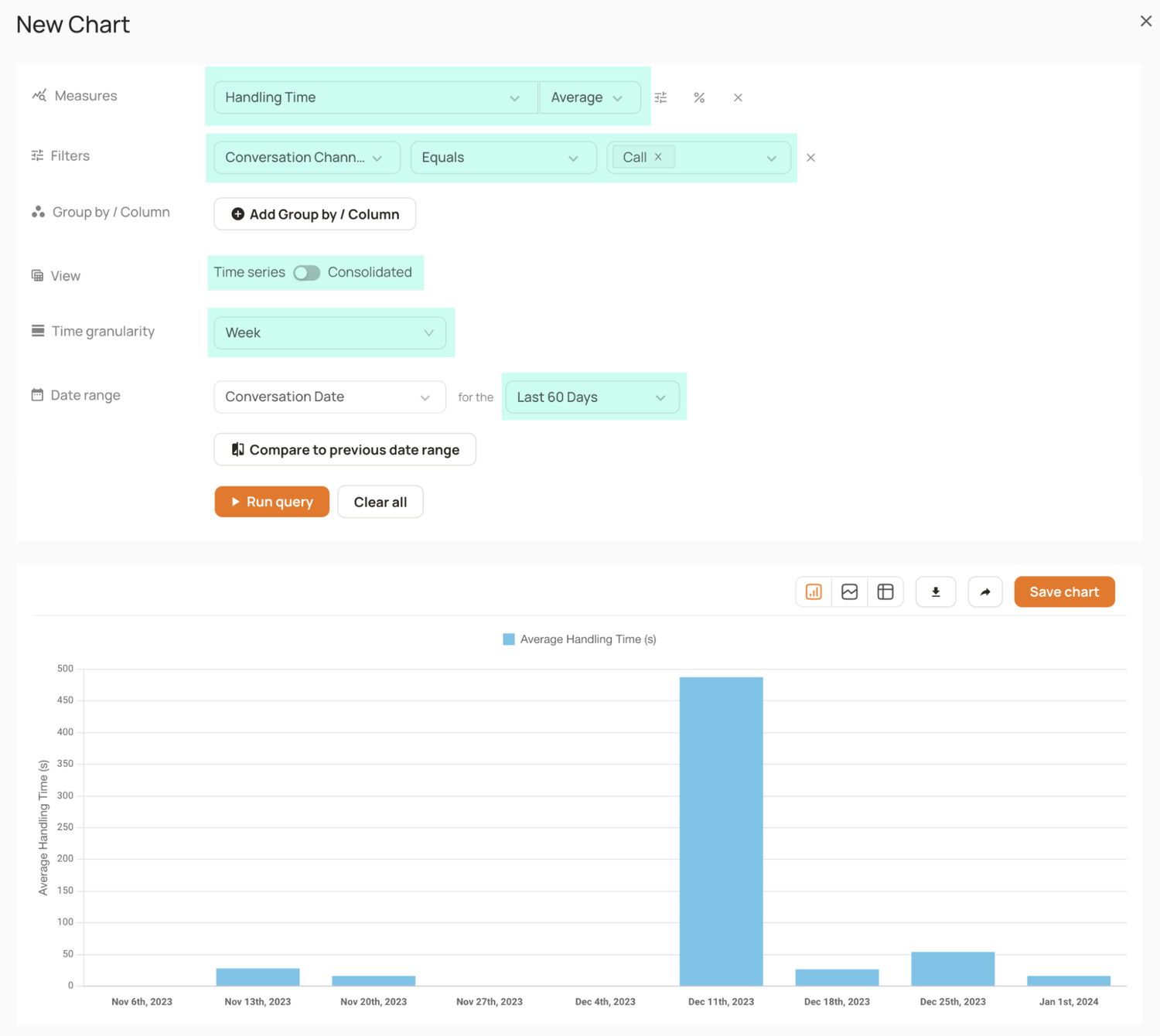
The ability to combine so many different types of data into intuitive dashboards allows you to answer questions such as:
- Which call topics are most frequently associated with low customer satisfaction scores?
- Which types of interactions are agents more likely to transfer to another department or escalate for further review?
- Can the sentiment expressed during a call predict the likelihood of a customer leaving positive feedback or a high satisfaction rating?
- What strategies or actions have allowed certain agents to effectively neutralize or reverse negative customer sentiment?
- What kinds of empathetic responses are most strongly correlated with variations in customer satisfaction metrics?
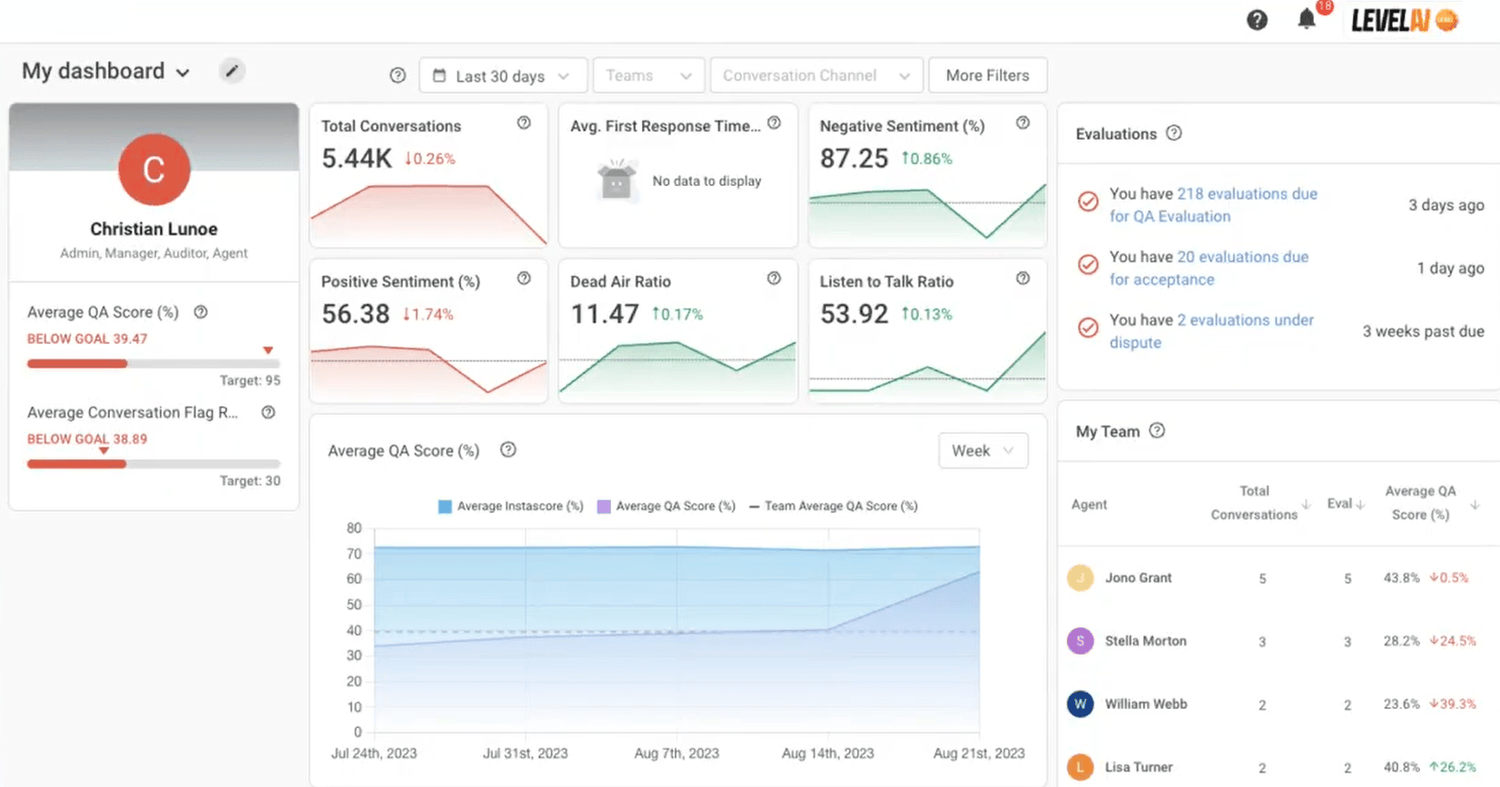
Also compelling is our platform’s Voice of the Customer (VoC) insights, which automatically gathers and reports on VoC trends without you having to send out post-interaction surveys.
Sending out surveys and getting responses has always been problematic, as these typically garner low response rates and customers have been known to only respond in cases of extreme satisfaction or dissatisfaction.
Level AI’s semantic intelligence model analyzes interactions to provide not only well-known metrics such as CSAT, NPS, and CES, but also to uncover more subtle customer issues and organization-wide patterns that you may not have been aware of, such as dissatisfaction with pricing, perceived lack of value, or frustration with customer support.
All this is illustrated in a user-friendly and comprehensive dashboard:
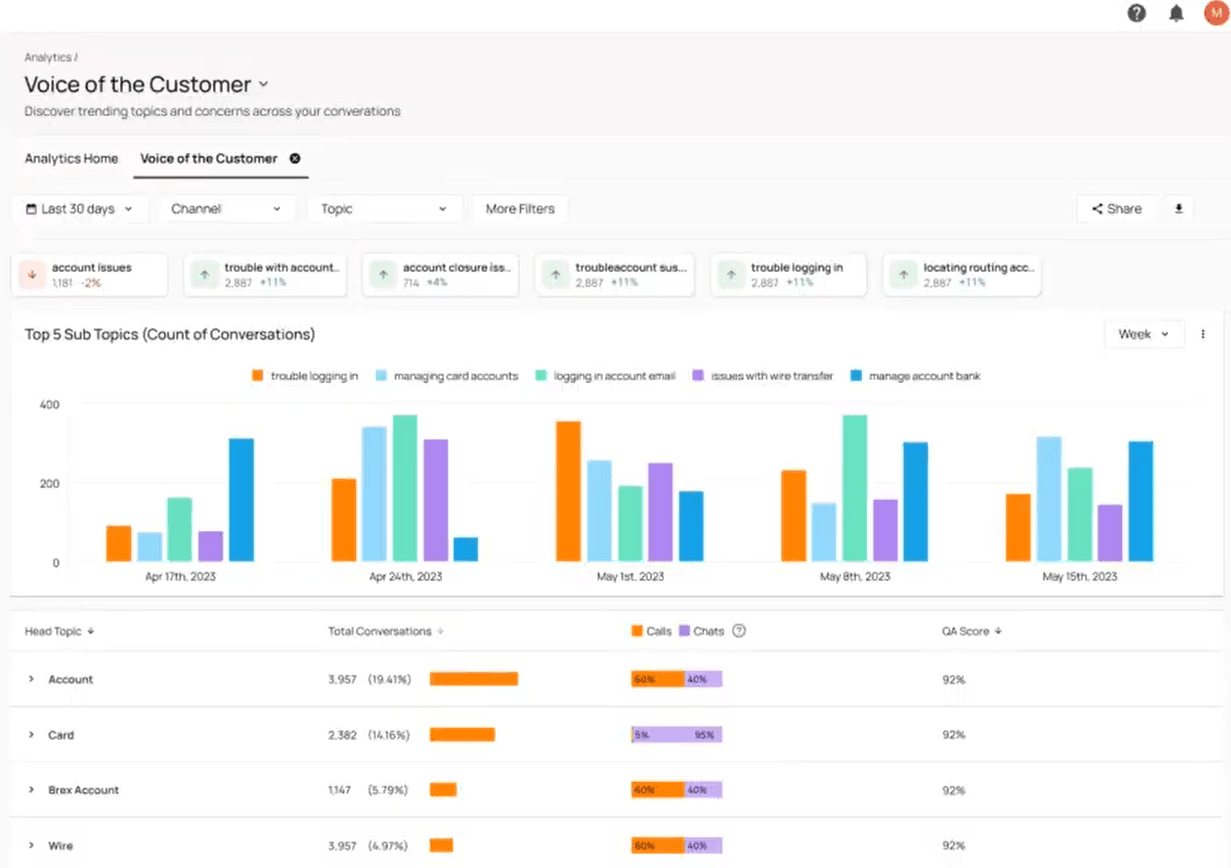
Such insights, which may have previously been overlooked in manual reviews, can be brought to light and enable you to proactively address emerging customer concerns and needs, root causes of churn, potential brand reputation issues, and more.
2. Observe AI
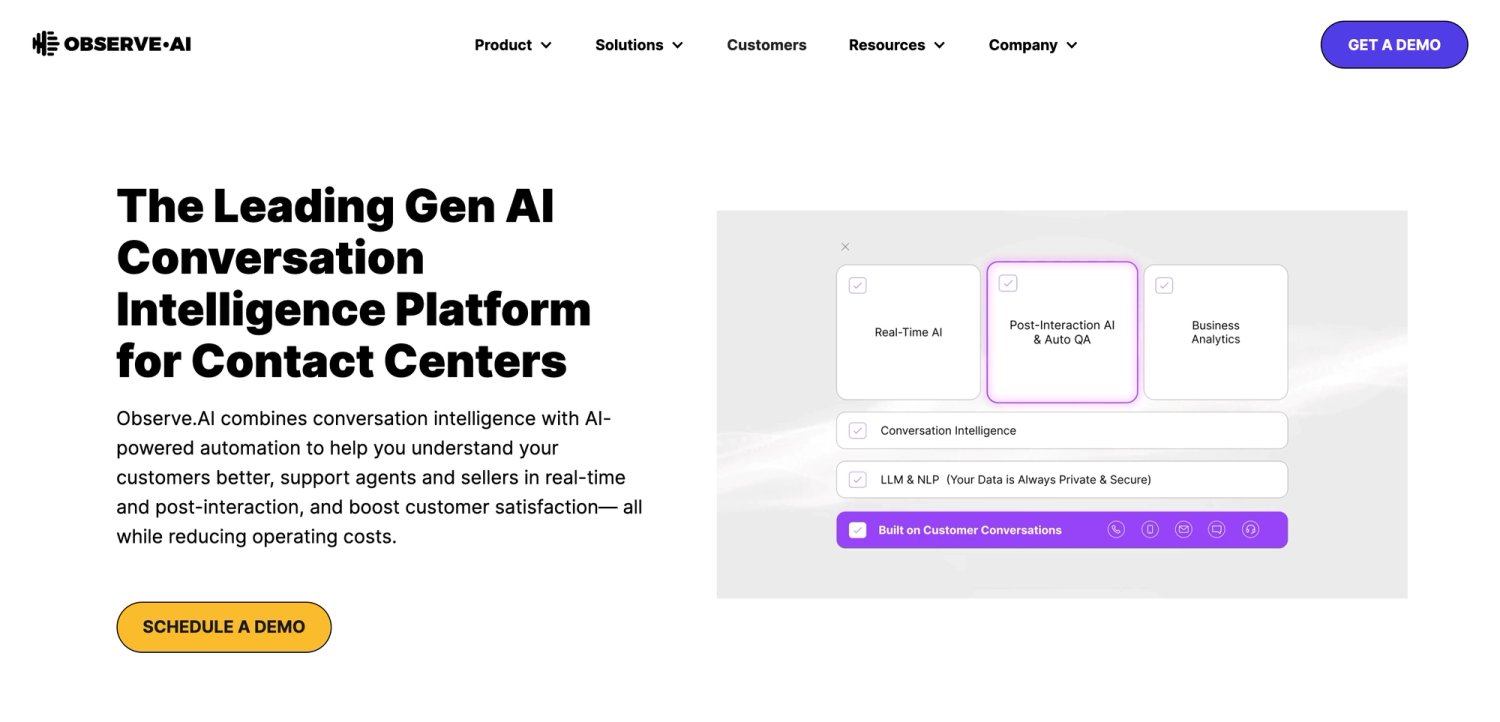
Observe AI is an AI and speech analytics solution for customer support and sales use cases. Customers can easily transcribe and analyze voice calls, get live sentiment analysis to gauge customer emotions, and unlock automated quality assurance scoring for agents.
Like Level AI, the platform helps enterprise customers with larger teams of agents to transcribe and analyze 100% of customer calls. Where Observe AI stands out is in its real-time AI tools, which include:
- Agent Assist: provides live guidance and coaching to agents during calls to help handle objections and stay on script to improve customer interactions.
- Knowledge AI: delivers real-time, contextually relevant knowledge base articles to agents during live customer calls.
- Summarization AI: automatically generates accurate call summaries in real time by capturing key discussion points, action items, and next steps.
Since Observe AI is tailored toward larger enterprise clients, they don’t disclose pricing. You must contact a sales rep to learn about custom plans.
3. CallMiner
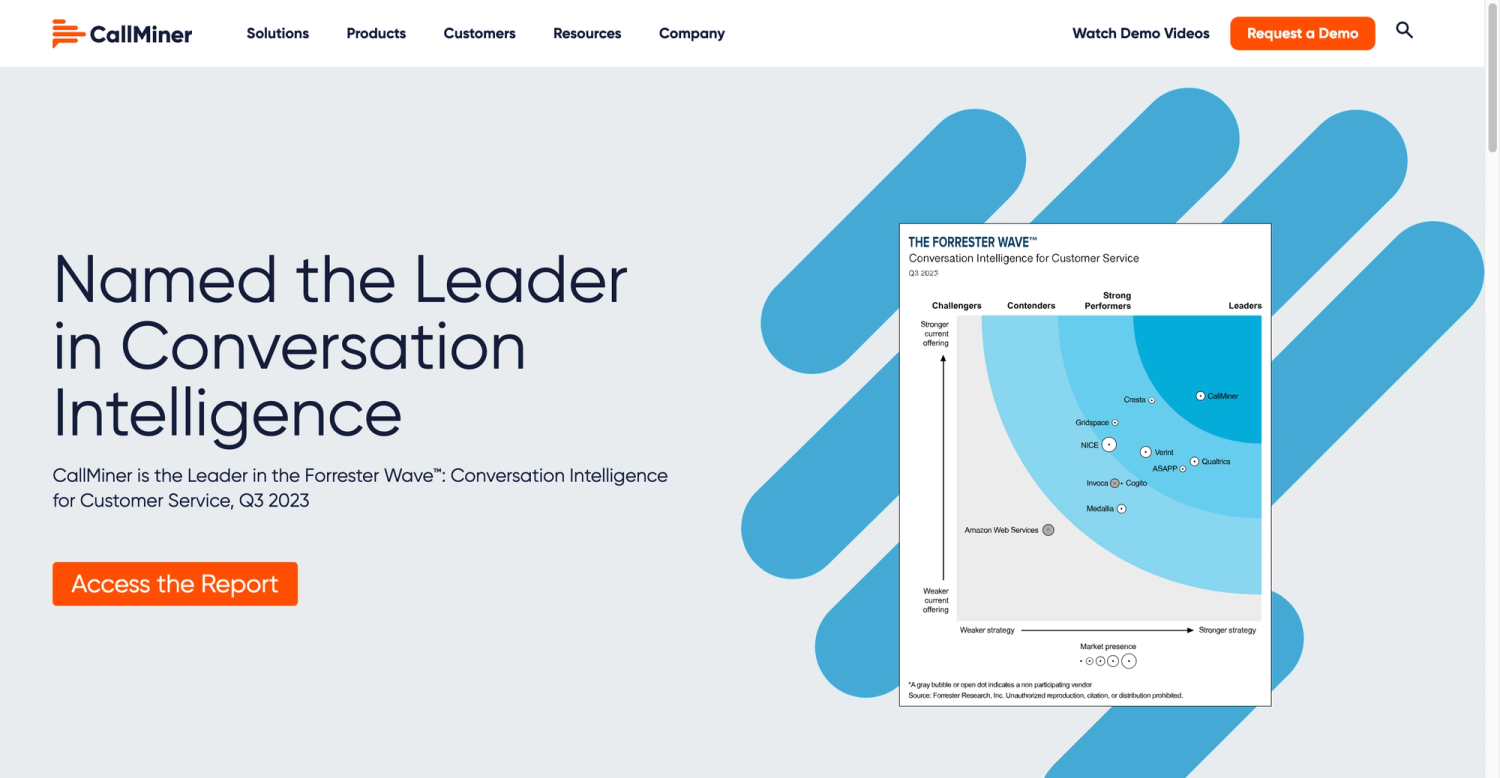
CallMiner is an omnichannel speech analytics software that includes AI-driven customer conversation analytics specifically for contact centers.
Their platform, Eureka, uses artificial intelligence and machine learning algorithms to analyze 100% of customer conversations across multiple channels, including voice calls, chat, email, and social media.
One of CallMiner's standout features is its real-time analytics capability. The system analyzes conversations as they occur, enabling immediate discovery of issues. For instance, it alerts supervisors to potential compliance risks or customer dissatisfaction during live calls, allowing for timely resolution of issues.
CallMiner’s Eureka also includes features for:
- Automatically scoring interactions based on predefined criteria (customer sentiment, satisfaction, etc.).
- Forecasting customer behavior, churn risk, and potential upsell opportunities based on historical interaction data.
- Analyzing call audio characteristics to detect potential fraud, verify caller identity, assess the emotional state of both customers and agents, and increase operational efficiency.
CallMiner’s pricing is available upon request.
4. Dialpad
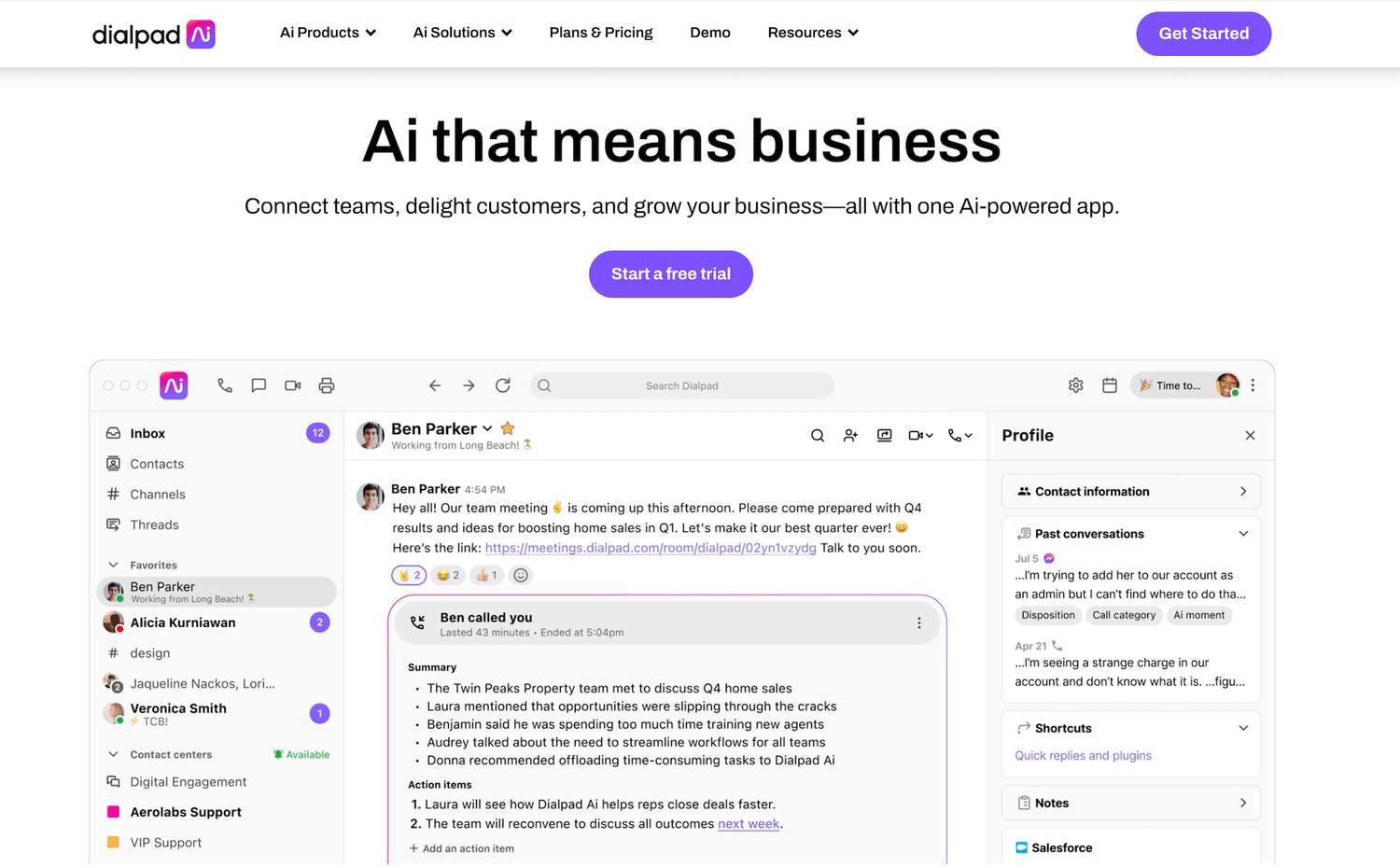
Dialpad is an AI voice-over-IP communications and voice analytics platform that allows companies to manage their customer experience operations in one place. By leveraging advanced AI, natural language processing, and machine learning, Dialpad delivers real-time customer interaction insights.
Key Dialpad speech analytics include:
- AI Contact Center: uses DialpadGPT to generate live call transcriptions and AI agent assist to help answer customer questions to reduce call takeovers.
- AI Sales: offers AI-driven customer insights, real-time coaching, and conversation intelligence to help sales teams close more deals.
- AI Communication: provides AI recaps for calls, automatic action item detection, and team collaboration tools for taking calls, responding to messages, etc.
Dialpad allows you to automatically generate call summaries, log conversations into groups based on category or keyword, and monitor live call sentiment to better understand customer interactions.
Dialpad’s pricing begins at $15/month per user (billed annually). Larger teams can upgrade to the $25/month Pro plan or contact the sales team for custom enterprise pricing.
Apply AI Speech Analytics to Your Customer Interactions
Level AI leverages advanced conversational intelligence and semantic intelligence to accurately assess up to 100% of customer interactions, helping you identify customer trends and empower agents with better insights.
To get started, schedule a free demo to learn how AI speech analytics with Level AI works and what type of impact it could have on your organization.
Keep reading
View all

